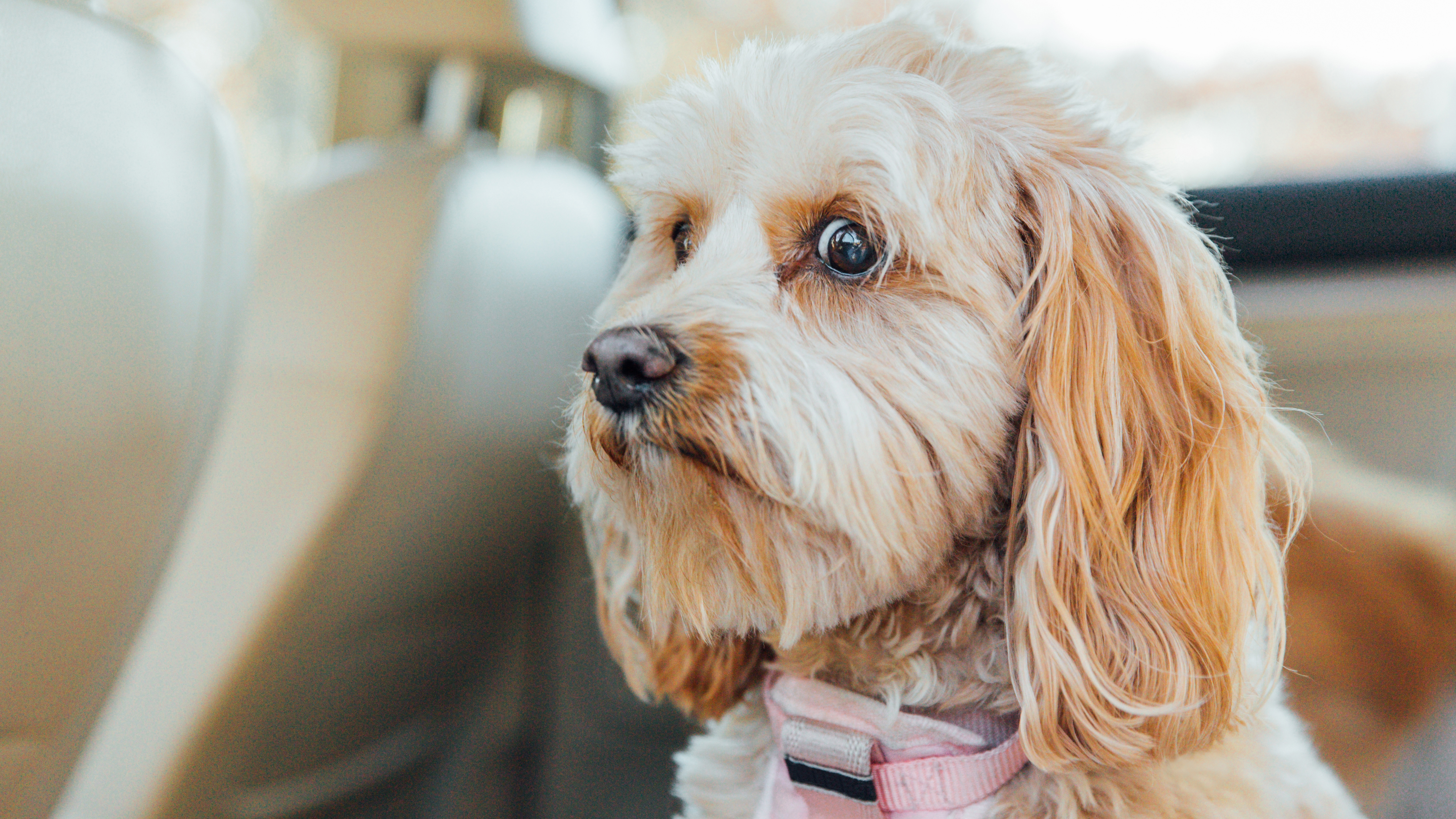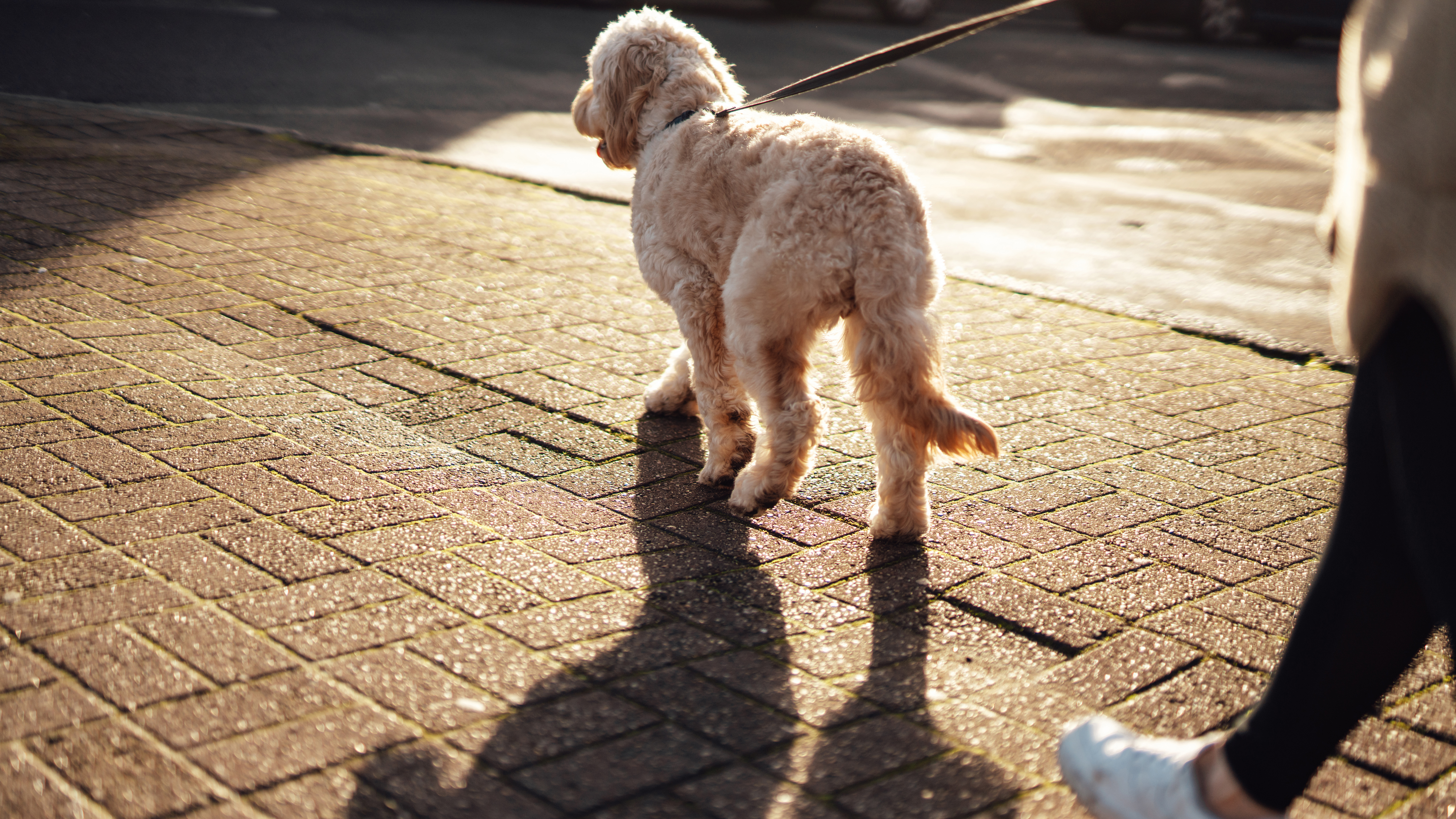
Just like humans, dogs can sometimes struggle with negative emotions, which can manifest itself in reactivity. Whether they’re reactive to cars, dogs or people, there can be many different causes for reactivity in dogs. However, three of the most common causes include underlying anxiety, incorrect socialization and negative interactions with other dogs when out on walks.
Knowing how to calm a reactive dog will be some of the most important skills you can acquire if you have a nervous pup, but before you can work on helping them to relax, it's important to get to the root cause of their reactivity.
We sat down with APDT-accredited dog trainer Lara Sorisi to find out more about the most common causes for reactivity in dogs – and how dog owners can help prevent these situations from happening.
Causes for reactivity in dogs
1. Anxiety
Some dogs are naturally more prone to developing anxious behaviors than others, but underneath the unwanted behaviour are often underlying emotions of fear and uncertainty. Lara says that, “reactivity is normally linked to anxiety. The dog is reacting to something that it’s either been negatively exposed to in the past, or hasn’t been exposed to in the correct way. No matter whether it’s cars, dogs, people or even particular noises, the dog hasn’t been introduced to the subject in the correct way and that’s why it feels so unsure about it.”
Reactivity can often build over time, so if you think that your dog’s negative behavior has suddenly come out of nowhere, there’s a good chance that you’ve missed subtle signs that your dog was feeling uncomfortable.
Behaviors such as excessive yawning, a tucked tail, lip licking, drooling, panting, over-grooming, and scratching can all indicate a stressed dog. So, if your dog is in a new or unusual situation, it’s worth watching their body language to see whether they’re uncomfortable or not. If they look like they’d rather be elsewhere, you might want to retreat and give them some distance so that they can self-regulate and calm themselves down. Don't forget to invest in the best puppy toys too, if need be.
2. Incorrect socialization

As previously mentioned, socialization can have a massive impact on a dog’s behaviour. There’s a reason that new puppy owners often have the importance of socialization stressed upon them when they take their new bundle of fluff home. However, socialization is unfortunately often misunderstood. Enthusiastic puppy owners will often let their puppy say hello to as many dogs and people as possible in the hopes of creating a well-rounded adult dog.
Unfortunately, as well-intentioned as this is, this can actually teach your puppy that they need to say hello to every dog and person they see – creating a dog that totally ignores its owner and strains towards every novel thing in its environment.
Of course, going in the opposite direction and not giving your puppy enough socialization is also problematic. Not being able to see and experience the world with a puppy’s sponge-like brain can leave the adult dog confronted with situations that leave it uncomfortable, anxious and reactive.
If you want to strike the right balance in your socialization, you need to make sure that your puppy has lots of opportunities to calmly observe dogs and people. Once they’re up to date on their vaccinations, we would encourage introducing them to dogs that you already know and trust – and if your cousin’s labrador is a loveable but overly bouncy dog that’s liable to jump on your puppy’s back (which is not only dangerous to your pup’s health but can also teach them bad habits), then you might want hold off on introducing them until your dog is older and more reliable.
If you’re interested in learning more about the correct way to socialize your dog, then we’d recommend getting in touch with a force free dog trainer that’s certified by an accredited organisation, such as the APDT.
3. Lack of education on dog walking etiquette

Did you know that a perfectly well adjusted dog can develop reactivity simply from other off-lead strange dogs running up to it? It’s not as strange as it sounds when you consider how you would react and feel if another human that you didn’t know sprinted across a field and only stopped when they were nose-to-nose with you.
This is why it’s so important to have proper dog walking etiquette when you’re on a walk – not only are you protecting your own dog, but everyone else’s as well. Lara says, “One of the biggest issues that my wonderful clients face is that they do the training and are responsible on their dog walks, but their hard work is often ruined by irresponsible dog owners who haven’t trained their dogs correctly, don’t understand proper socialization and can’t even recall their dogs.
“With so many people having dogs now, common dog walking areas are quickly becoming overpopulated. With incorrect socialization and over socialization also being so common, more and more owners are having to consult a qualified behaviorist to fix dog reactivity from negative experiences. I caution all of my clients on the importance of being aware of how many dogs end up with issues, because all it takes is one negative interaction to create a huge problem.
“I’ve generally found that people just aren’t educated enough on dog walking etiquette and they’re also not willing to train their dog. This means that dogs without proper training are being let off lead when they shouldn’t be. The common refrain of ‘let the dog be a dog’ is really terrible advice – just like children, dogs need boundaries and structure in order to be a polite and respectful member of our society.”
While you obviously can’t control what other people do, if you want to try and avoid situations where other dogs rush your own pup, then it’s best to take them on a walk at quiet times in remote areas. While this isn’t foolproof, you’re less likely to come across potentially negative situations when there’s simply fewer dogs around. Another great option is to take your dog to a private dog walking field – this is a good opportunity for them to stretch their legs and run around without any possibility of coming across a strange dog.
Looking for more great training tips? Check out our guides to three of the most common loose leash walking mistakes (and how to fix them) and three reasons why your dog’s recall isn’t reliable (and what you can do about it).







